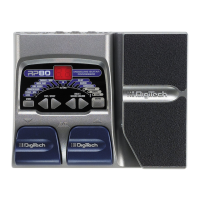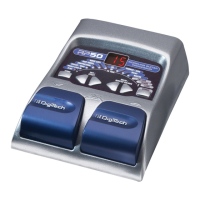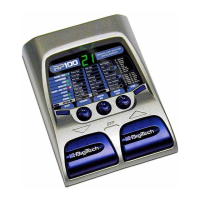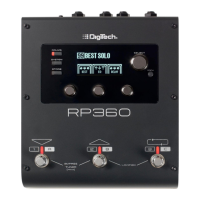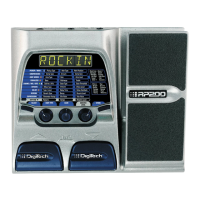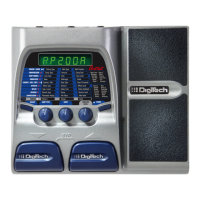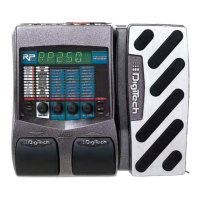Mic USB Source Mapping
The mic signal, as can be seen in the previous Mic Signal Routing diagram, has two paths in which it can
travel up the USB port to the computer. Path E taps the mic signal off right at the mic input and sends
unprocessed signal up to the USB port. Path C taps the signal at the output of the RPx400 and can
include any effects processing that may be used. Below is a matrix to show where the signal is tapped
based on how the Mic, USB 1-2 Source, and USB 3-4 Source settings are configured.
Line Signal Routing
The line signals, like the mic signal, can be routed in different ways through the RPx400. linoff disables
the line inputs from being being heard but dry line signal can still be recorded.
lindry routes the left
and right line signals around the RPx400’s effects processing and mixes them in at the left and right out-
puts respectively.
linrvb routes the line signals only through the RPx400 Delay and Reverb modules.
linefx sums the left and right line input signals together and then routes this signal through all of the
RPx400’s effects.
Line USB Source Mapping
The line input signals, as can be seen in the previous Line Signal Routing diagram, has two paths in which
they can travel up the USB port to the computer. Path A taps the line input signals off right at the line
input and sends unprocessed signal up to the USB port. Path B taps these signals at the output of the
RPx400 and can include any effects processing that may be used. Below is a matrix to show where the
signal is tapped based on how the Line, USB 1-2 Source, and USB 3-4 Source settings are
configured.
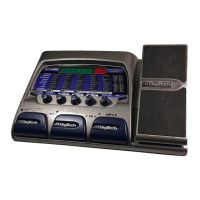
